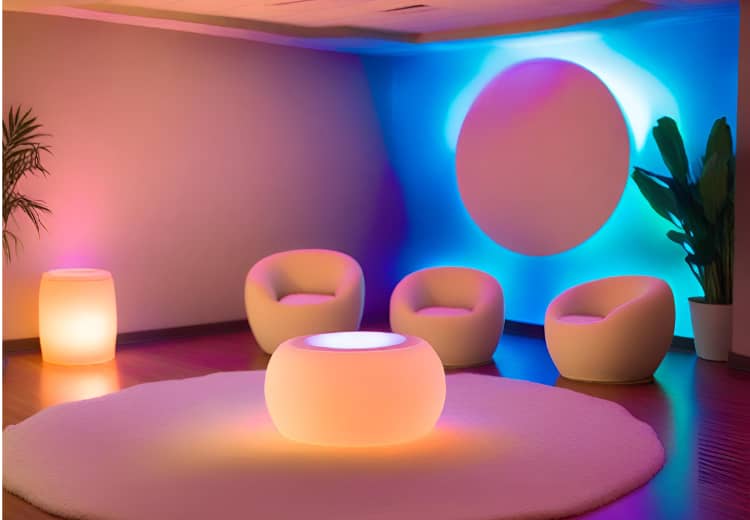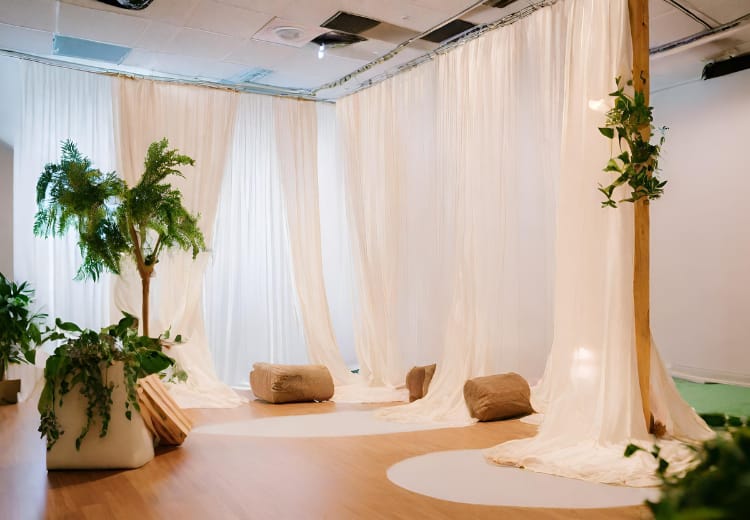In the dynamic world of events, where participants are immersed in a sea of information, interactions, and sensory stimuli, the need for a calming area is more and more increasing.
Enter the sensory room, a dedicated space designed to provide get away from the overwhelming sensory overload often experienced at events.
What is a Sensory Room?
A sensory room is an environment that engages all five senses – sight, sound, touch, taste, and smell – to promote relaxation, reduce stress, and enhance overall well-being.
It serves as a room where event attendees can relax, recharge, and return to their engagements feeling refreshed and revitalized.
Benefits of a sensory room for events:
Enhances inclusivity: Sensory rooms are much appreciated by attendees with sensory sensitivities, such as those with autism spectrum disorder (ASD), sensory processing disorder (SPD) or highly sensitive persons (HSP), creating an inclusive environment where everyone feels welcome and comfortable.
Reduces stress and anxiety: The calming atmosphere of a sensory room can help to get rid of stress, anxiety, and feelings of overwhelm, allowing attendees to recharge and return to the event sessions with renewed focus and clarity.
Promotes relaxation and well-being: Sensory rooms offer a calming space of relaxation, providing a much-needed break from the high-energy environment of events. The use of soothing elements like aromatherapy, soft lighting, and calming sounds helps to relax and improve overall well-being.
Improves focus and concentration: By providing a sensory-rich environment, sensory rooms can help attendees refocus and regain concentration, enhancing their ability to engage with the event’s content and activities.




Visual stimulation: Calming visuals, such as nature-inspired imagery or soft, muted colors, can promote relaxation.
Auditory stimulation: Soothing sounds, such as gentle music, nature sounds, or white noise, can help calm the nervous system and reduce auditory overload.
Tactile stimulation: Fidget spinners, textured objects, or weighted blankets can provide a sense of comfort and grounding, especially for those with tactile sensitivities.
Smell/Olfactory stimulation: Aromatherapy with calming scents, such as lavender or chamomile, can promote relaxation and reduce stress levels.
Taste/Gustatory stimulation: A selection of dark chocolate, frozen fruit, fresh lime juice, or other light snacks can provide a refreshing sensory experience.
Engage in self-care: Sensory rooms offer a private space for attendees to practice self-care techniques, such as breathing exercises or mindfulness meditation.
Take a sensory break: Attendees can utilize the room’s various sensory elements to calm their senses, reduce stress, and recharge their mental energy.
Connect with others: Sensory rooms can provide a common ground for attendees with similar sensory needs to connect and share experiences.
By incorporating a sensory room into your event planning, you as organizer can demonstrate your commitment to inclusivity and accessibility, ensuring that all attendees have a positive and enriching experience. Sensory rooms cater to the diverse needs of all participants, creating a sense of belonging and enhancing the overall event experience.
Our global network of suppliers ensures we can deliver the perfect sensory room for your event. Get in touch today.